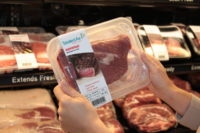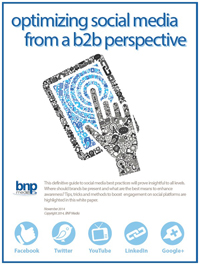Packaging Tech: A Measured Approach

The definition of sustainability, according to the Merriam-Webster dictionary, is: “capable of being sustained: or a method of harvesting or using a resource so that the resource is not depleted or permanently damaged.” Although the entire meat industry seems to be focused on sustainability, what does it really mean to and for the industry when it comes to sustainable packaging?
* Packaging that is 100 percent recyclable?
* Packaging that is made from biodegradable materials?
* Packaging that results in less waste?
* Packaging that is produced with less energy?
Most meat processors will say “all of the above, and then some.” Meeting the consumer demands for greener products is a challenging task for all processors — add in changing technologies and the financial confines of today’s economy, and you can find a daunting road for meat processors when it comes to sustainable packaging.
According to market research conducted in June 2010 by Mintel International Group, consumers are motivated to purchase sustainable products and packaging; however, their knowledge of green categories and products remains limited. According to Krista Faron, director of innovation and insights at Mintel, purchase drivers for consumers are diverse and numerous.
“For example; when consumers were asked why they bought food and drink in the last month with a sustainable claim: 67 percent interviewed wanted to create less waste, 65 percent wanted to support brands that are helping the environment, while 45 percent thought the product was higher in quality, and 42 percent were concerned about food safety,” Faron said. These results suggest consumers are driven to purchase based on claims with only a vague understanding of the actual meaning of those claims.
In addition, the research found that category plays a critical role in sustainable purchases. For example, juices and dairy products ranked the highest under consumers’ likelihood to purchase with recyclable packaging claims at 46 percent and 40 percent respectively, while proteins (meat and seafood) were identified at a level of 15 percent. Consumers are more likely to purchase fruits, vegetables or snacks in biodegradable/compostable packaging verses other products and when it comes to claims regarding reduction of emissions and carbon footprint — consumers steered toward purchases of pre-cooked or prepared-food meals and snacks.
Interestingly, when consumer’s familiarity with claims was examined, claims such as reduced carbon footprint, fair trade, sustainable forestry and made from energy with solar or wind power were the least recognized.
The research also cited reasons consumers did not purchase products with a sustainable claim. Key reasons stated were that claims were not noticed, product was too expensive or they didn’t believe there was any difference between products.
“The key takeaways from this research are: packaging efforts seem to have the broadest based appeal and greatest impact, quality and food safety remain important factors, simple and bold claims are critical, and finally the most successful sustainable products will require little to no increase in cost or change in consumer routines or convenience,” Faron stated. Ultimately these research findings suggest that sustainable packaging is a topic that consumers are familiar with, and can and will affect purchases. But companies should implement these programs seamlessly without altering consumer routines.
Packaging suppliers continue to focus on advancing technologies to meet the green trend; however they must also provide solutions that add value to their customers. By offering packaging that decreases waste, reduces product damage and extends shelf-life, processors can deliver more products thus reducing energy costs without jeopardizing product loss through transportation while at the same time reducing the waste and packaging headed for a landfill. By creating packaging out of biodegradable products, such as corn, tapioca or potatoes, suppliers can utilize byproducts of naturally occurring plants and grains, helping multiple industries consume potential waste products as well as creating packaging that can be recycled.
In addition, many packaging suppliers are focusing on decreasing their own waste through internal improvements in production line efficiencies, scheduling and energy-savings programs. Identifying key metrics for driving sustainability, packaging companies are partnering with processors to address the challenges of food safety, product quality, product shelf-life, cost and availability of inputs as they relate to sustainable packaging.
The end goal? To ensure the new green packaging options meet the growing requirement to decrease waste and improve sustainability while continuing to support the industry’s growth and financial initiatives.
Coleman Natural Foods, an Organic and Natural Poultry and Prepared Foods Processor follows the four pillars of sustainability philosophy, which include: Environment, Economic, Cultural and Social issues, as the key factors impacting their green programs.
“For Coleman, it is important that our initiatives work within several, if not all, of the sustainability pillars to be the most impactful,” said Eva Safar, vice president of marketing. In early 2009, Coleman rolled out a tray-less packaging initiative in its Petaluma Poultry division. This rollout transitioned product from the standard tray with overwrap or lidded tray technologies to rollstock film only. The conversion allows Coleman to transport more product, due to less packaging and air, as well as decrease the amount of packaging waste.
Safar added that, to date, Coleman has successfully shifted approximately 80 percent of its branded products to the tray-less packaging format.
“The shift was not without its challenges,” she said. “We were forced to address product presentation issues related to the consumer’s initial preference for poultry products in a tray, as well as initial difficulties with packaging quality resulting in an increased number of packages with leaks.
“We were able to quickly work through these problems by partnering with our retailers to inform and educate consumers on the new packaging, while at same time work with our packaging supplier to dramatically reduce the packaging integrity issues.”
Coleman’s experience in making sustainability an integral part of its business initiatives and strategies clearly demonstrates the possibility for processors to balance financial goals with the development of new and improved green products.
As the marketplace continues to move in the direction of greener, more earth-friendly packaging alternatives, there must be an alliance between all industry sectors. Packaging suppliers, processors and retailers will need to cooperatively work towards sustainable packaging solutions that ensure a smooth and economically viable transition while meeting the needs and desires of consumers.
Bottom line, the move toward sustainable packaging must be a measured approach taking into account messaging, price and convenience to guarantee success.
For more information, contact Elizabeth A.W. Dressler, M.S. of West Spear Consulting, a Technical Services & Marketing Business, at (303) 246-0807 or west.spear.consulting@gmail.com.
Looking for a reprint of this article?
From high-res PDFs to custom plaques, order your copy today!







